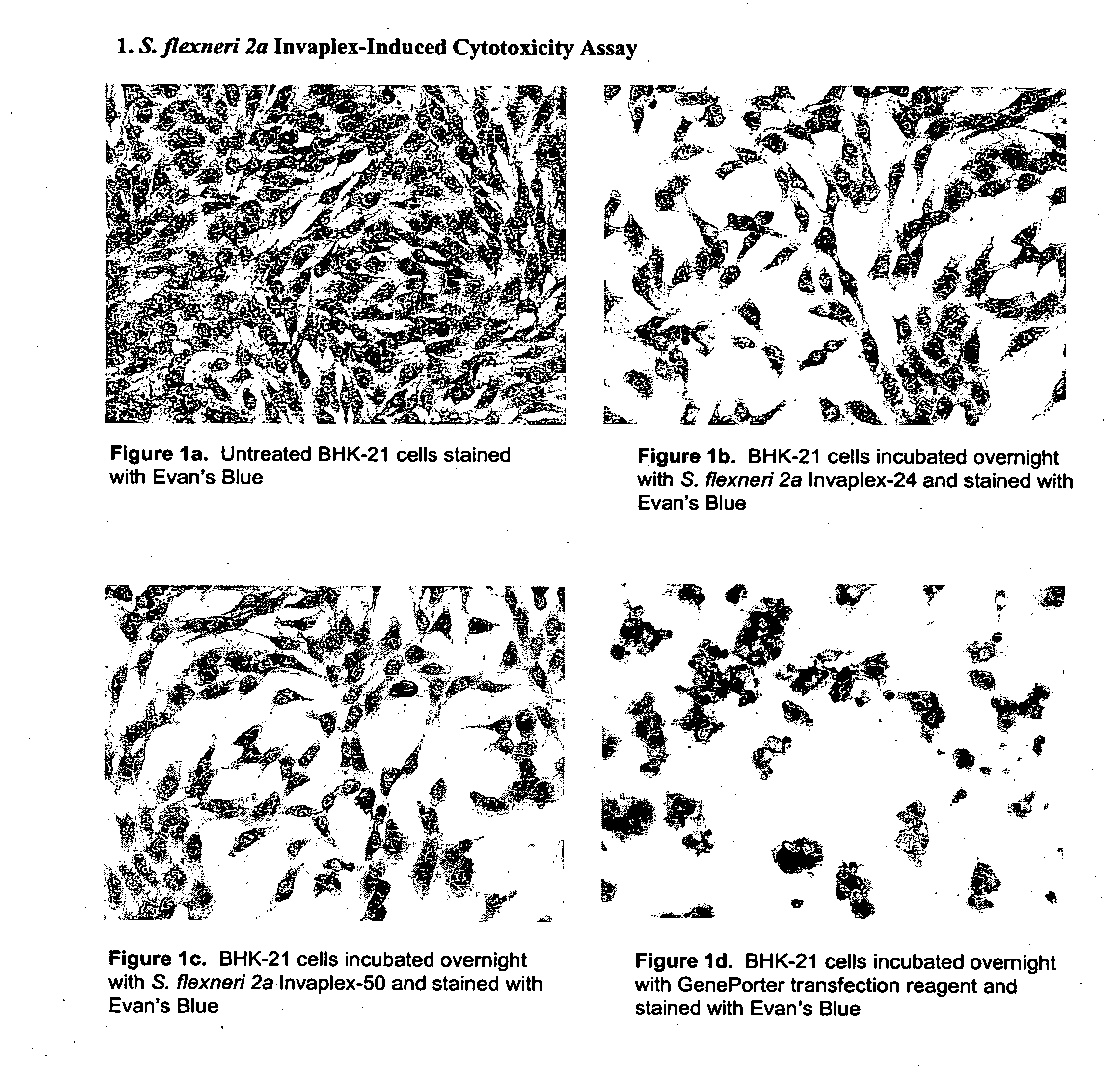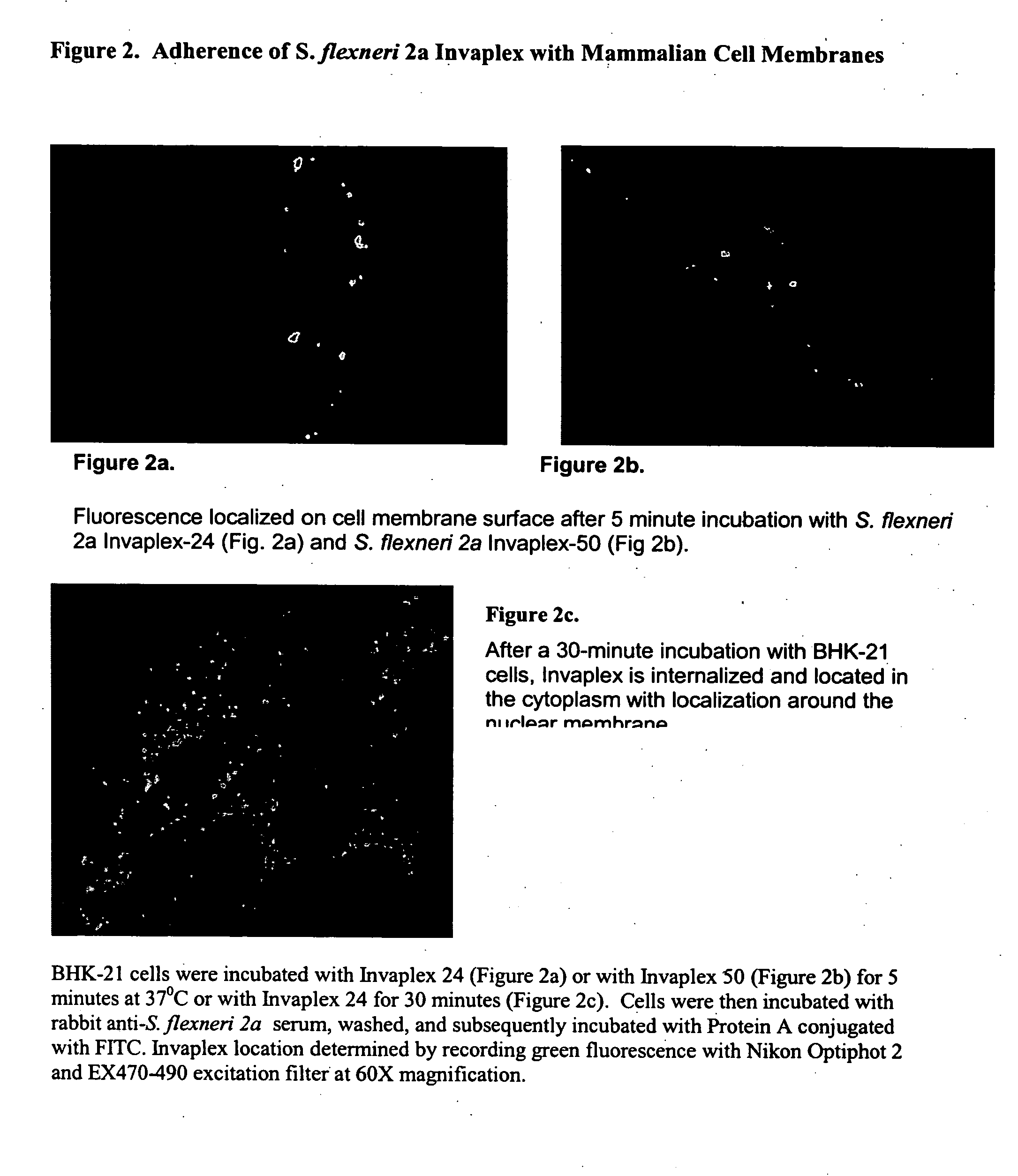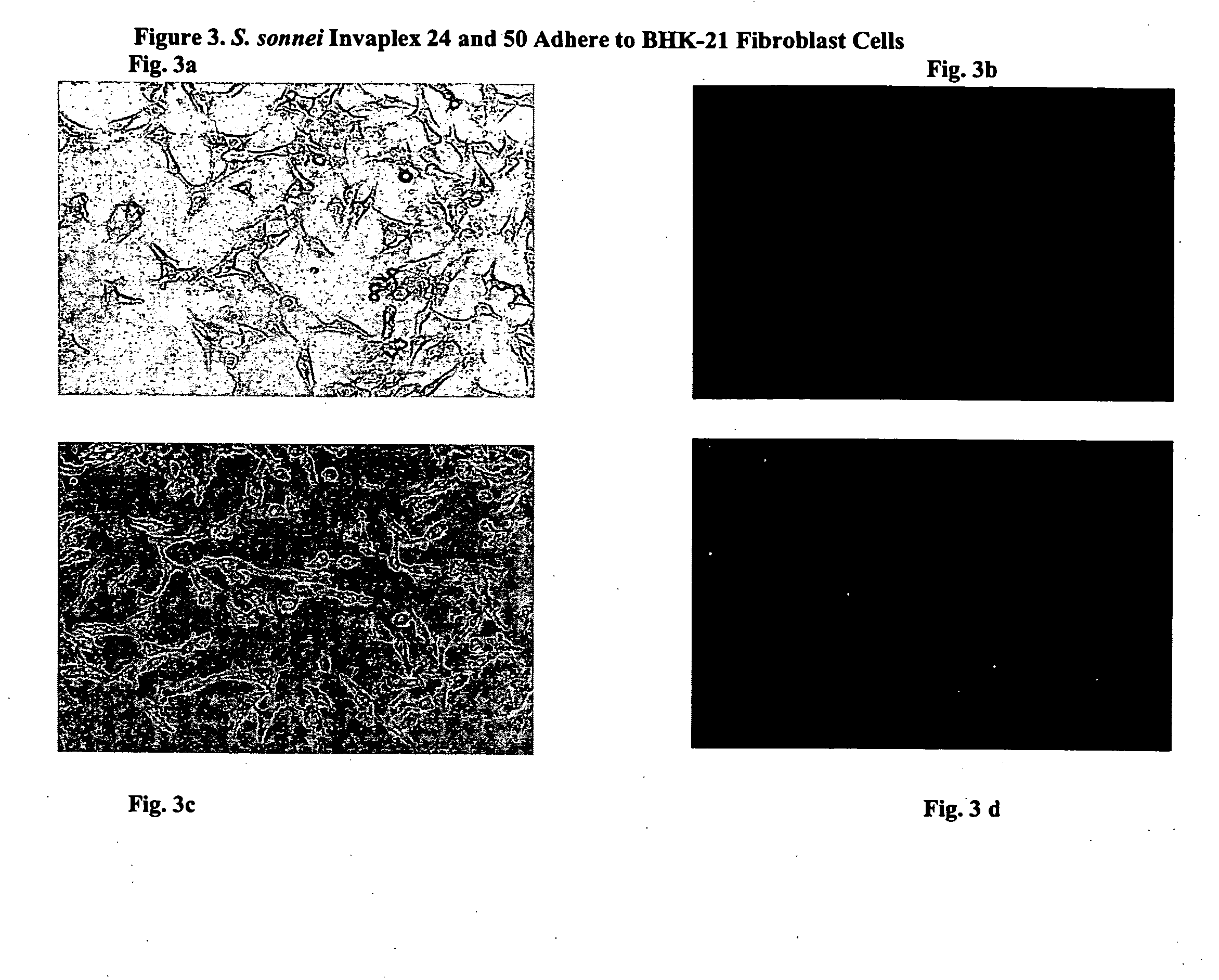Use of Shigella invaplex to transport functional proteins and transcriptionally active nucleic acids across mammalian cell membranes in vitro and in vivo
a technology of transcriptional active nucleic acids and shigella invaplex, which is applied in the field of in vitro and in vitro use of shigella invaplex, can solve the problems of insufficient detoxification of toxic molecules, inability to safely and effectively deliver these novel vaccines, and inability to develop adjuvants
- Summary
- Abstract
- Description
- Claims
- Application Information
AI Technical Summary
Benefits of technology
Problems solved by technology
Method used
Image
Examples
examples
[0039] Isolation and Characterization of Invaplex
[0040] Purification of Shigella Invasin Complex (Invaplex).
[0041] The Shigella Invaplex was isolated from water extracted proteins of virulent Shigella including Shigella flexneri 2a (2457T) and S. sonnei (Mosely). A modification of the original water extraction procedure (10) was used to prepare the material from which the Shigella invasin complex is isolated (20). Water extract batches positive for IpaB and IpaC were applied to an anion exchange FPLC (HiTrapQ, Pharmacia) column. Two peaks (measured at 280 ηm) containing the invasins and LPS were collected. The first peak (Invaplex 24) is eluted with 0.24M NaCl in 20 mM Tris HCl, pH 9.0 and the second peak (Invaplex 50) is eluted with 0.50 M NaCl in 20 mM Tris-HCl, pH 9.0. Each FPLC fraction was analyzed by immuno-spot blot using monoclonal antibodies (9) for the presence of IpaC and IpaB. Fractions containing the greatest amount of IpaB and IpaC in the Invaplex 24 peak were pooled...
PUM
| Property | Measurement | Unit |
|---|---|---|
| concentration | aaaaa | aaaaa |
| pH | aaaaa | aaaaa |
| Concentrations | aaaaa | aaaaa |
Abstract
Description
Claims
Application Information
 Login to View More
Login to View More - R&D
- Intellectual Property
- Life Sciences
- Materials
- Tech Scout
- Unparalleled Data Quality
- Higher Quality Content
- 60% Fewer Hallucinations
Browse by: Latest US Patents, China's latest patents, Technical Efficacy Thesaurus, Application Domain, Technology Topic, Popular Technical Reports.
© 2025 PatSnap. All rights reserved.Legal|Privacy policy|Modern Slavery Act Transparency Statement|Sitemap|About US| Contact US: help@patsnap.com



